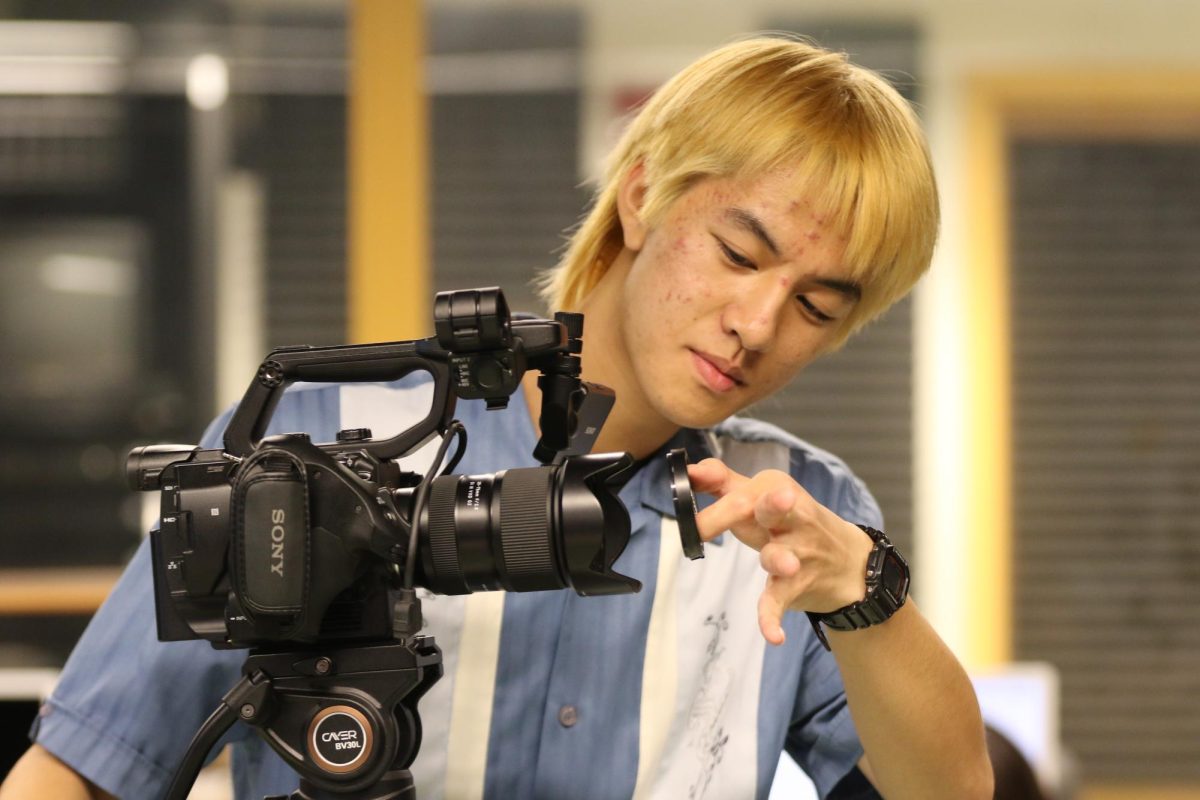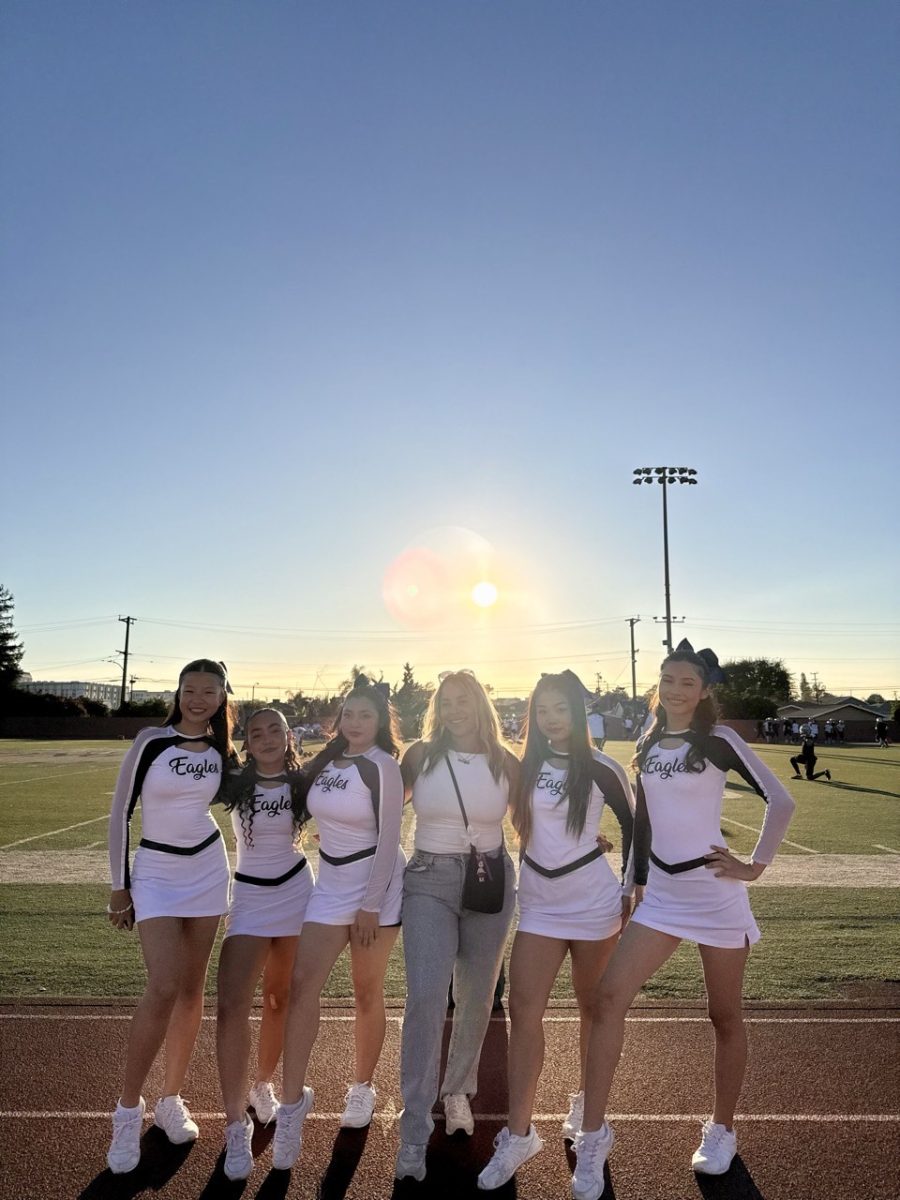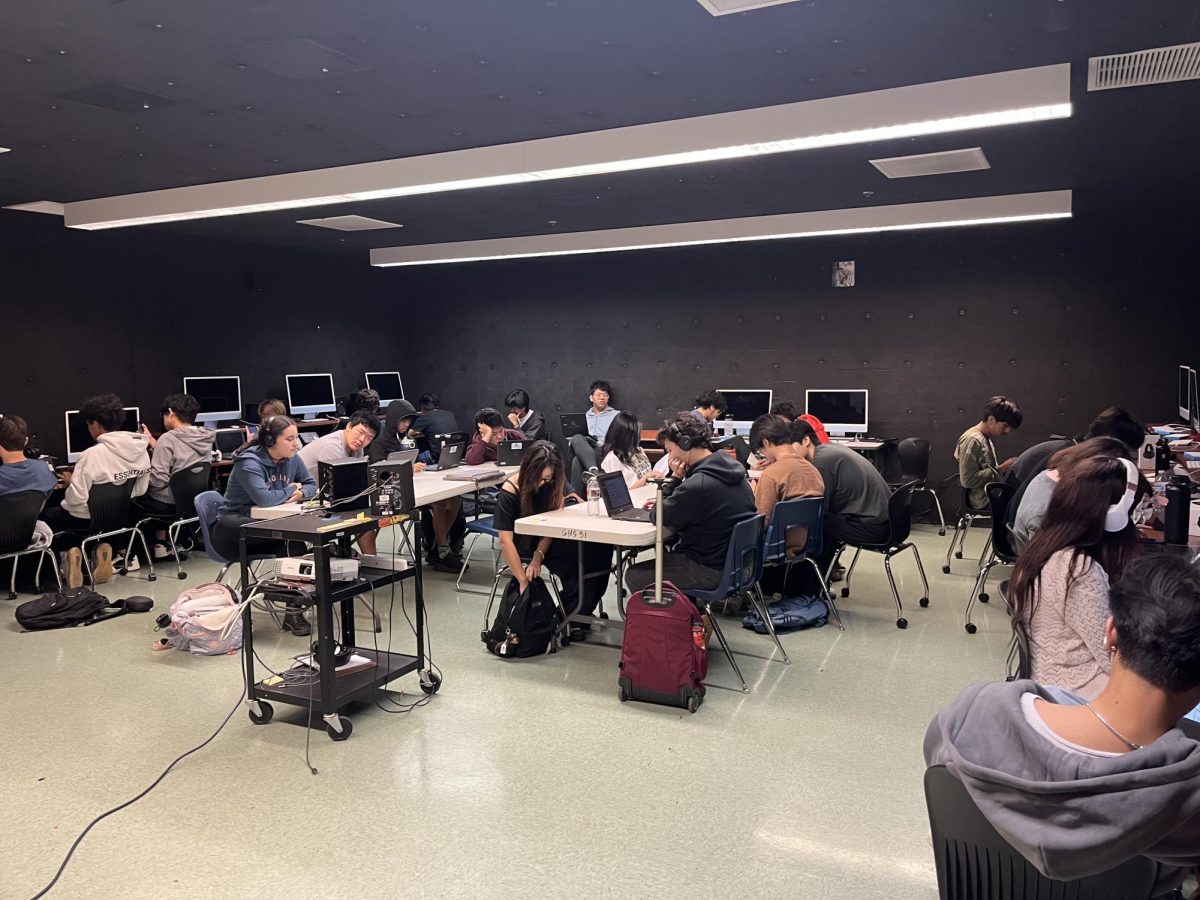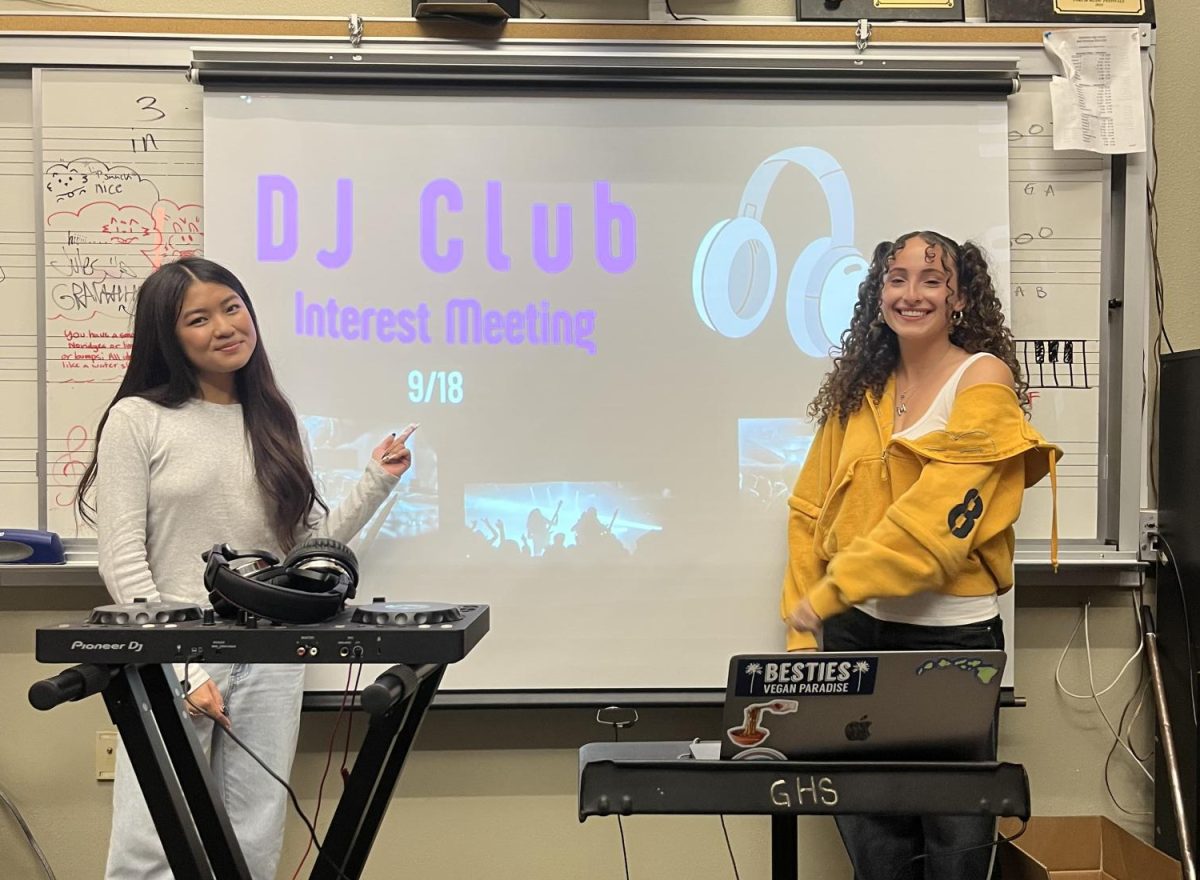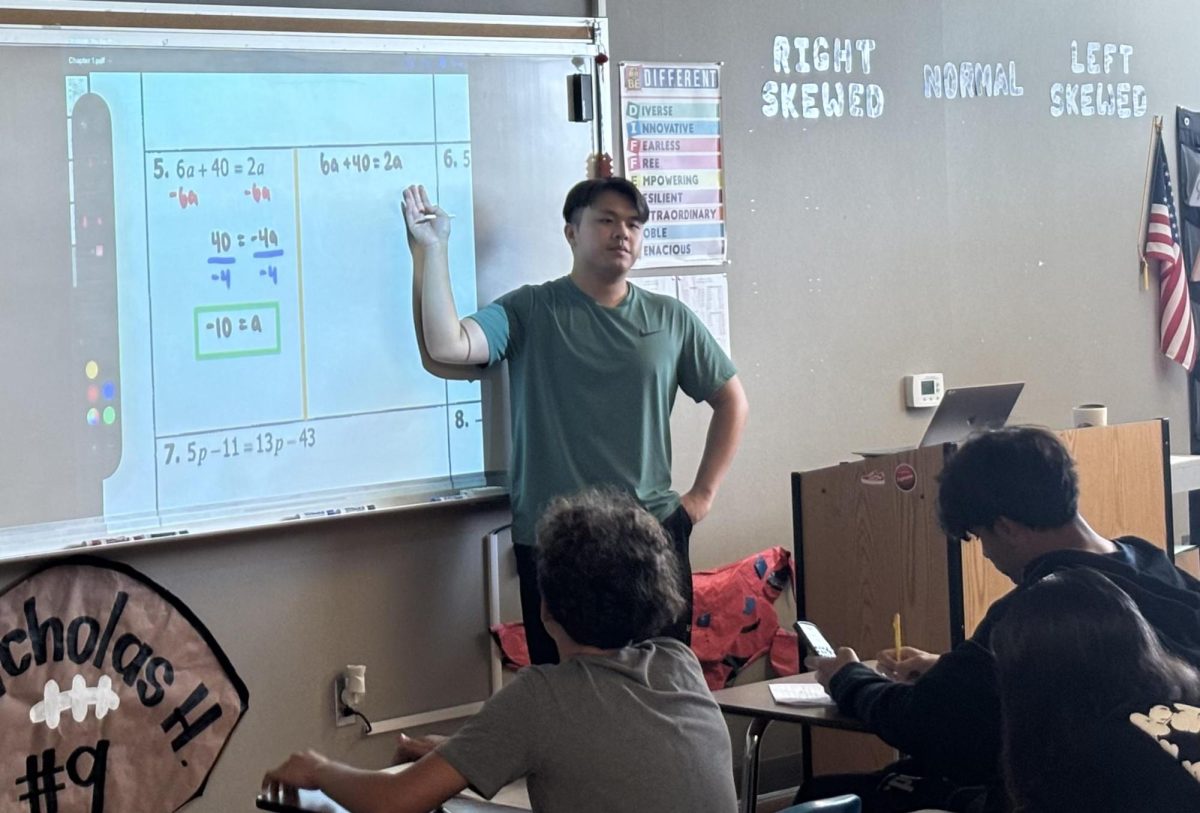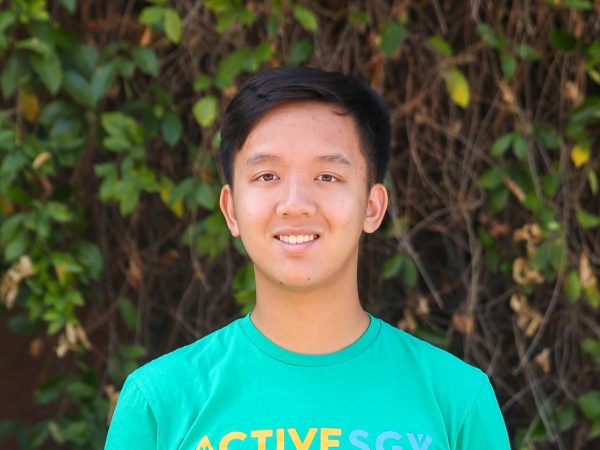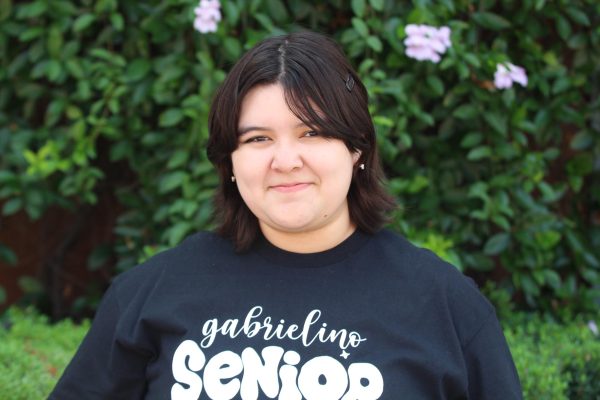Across from B102 is the mysterious room dozens of students pass by daily and never stop to consider—the Soaring Eagle Sound Recording Studio. What could be in it? Usually nothing.
However, since late February, on Tuesdays and Thursdays after school, a small group of students has gathered to participate in a PCC dual-enrollment class: TVR 004—Beginning Single Camera Production. TVR 004 is one of two dual enrollment classes held at Gabrielino High School this semester, in addition to Sociology 002.
Freshmen Andrew and Cathryn Abrishami had already taken sociology as a dual-enrollment class last semester.
“Our counselor told us more classes were offered[…] so we looked into it and thought this was interesting,” Cathryn explained.
The students work with professional filming equipment, tripods, cameras, and lights, every time the class meets to create various shots and videos, all of which have come free to the students. Each group, working in teams of 3 or 4, is given a complete filming kit, which they first learn to operate and are expected to set up throughout the rest of the course.
Andrew elaborated, “[TVR] was a lot of hands-on work, while sociology class is mainly a lot of studying and understanding different people.”
The Soaring Eagle Sound Recording Studio is just as sophisticated. Apple iMacs line the room, allowing student more capable technology than their Chromebooks for video editing. Unlike a normal classroom, its walls are almost entirely black. The room lacks windows, making it a suitable dark space where lighting angles can be properly configured.

This is Angelo Ford’s first time teaching the class to high schoolers.
“I’ve taught it several times at PCC, but this is the first time teaching to high school students,” Ford said. “Typically they’re in a film production track at PCC and [TVR] is one of the classes they take.”
Ford described the class as teaching “a basic level knowledge of video production,” like learning how to use a camera and creating setups for interviews and other segments. These are universal skills students can take even if they don’t plan to continue into film production, and they progress naturally. The class started with operating a camera and setting up tripods, before moving on to shots and videos.
Cathryn described a project in which they filmed the making of a sandwich. The project involved extensive planning during class, during which they created storyboards and shot lists.
“[We] set up the camera in different angles and edited the video to make it more seamless and add music,” Andrew elaborated.
Each new class reinforces these skills. By the middle of April, students already knew how to operate cameras and tripods and thus create and angle the shots they wanted. Their next major topic was lighting to create dramatic shots or impact the viewer.
Ford’s experience in filmmaking is immense and nothing to scoff at. His background in production spans 10 years, where he’s worked on two feature films and over 35 short films, a quality many of his students are in awe of. That translates into a teacher who’s largely hands-off and trusts students to work and figure things out, a “see it, do it, teach it method.”
Class begins with a presentation or video on the subject. For lighting, Ford showed an extensive video that covered multiple styles of lighting used throughout the film, which students then worked through trying to create through their cameras.Here, the students learned about the key lights in their kits. Groups created half-lit shots that only highlighted one side of the face and loop and butterfly lighting, creating shadows on the face. These shots were made by angling the key lights differently, which Ford encouraged students to experiment with. By 5:00, everyone packs up and gets ready to leave.
Sophomore Phong Le has been thoroughly surprised by the class. He joined because many of his friends also enrolled and to learn something new. But the first few weeks of the class felt slow to him.
“I feel like now we’re actually doing something in the class, for the past 2, 3 weeks, it’s been enjoyable,” he said.
The hands-on element of the class has proven to be incredibly engaging. Students get to create the shots and angles they’ve seen shown to them so many times. The more technical aspects Ford teaches are experimented on by students, with “rules of filmmaking” often intentionally broken to create more interesting angles.
“The hands-on nature is very fun, I get to really get into what’s going on,” said freshman Scott Chung.
Chung also took sociology last semester and found that production class has helped him see if he wants to go into film production.
Ford has found the experience thoroughly “refreshing.”
He finally remarked, “The students have been really been great. I’ve been encouraged by how interested and engaged they are on the subject matter.”

